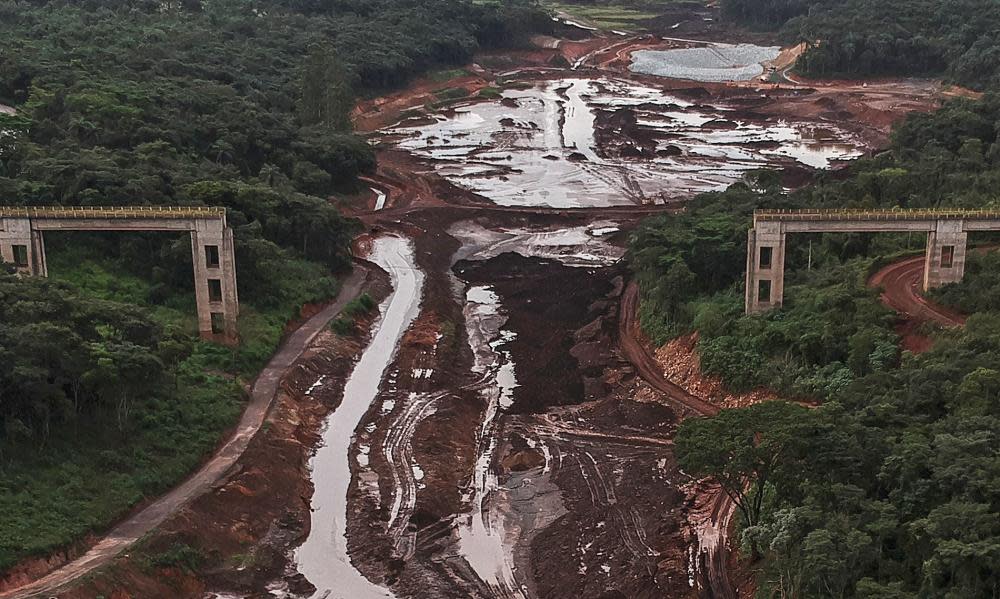Experts call for independent body to oversee new standard to prevent dam collapses at mines

The chairman of the group behind a new standard designed to reduce the chance of deadly dam collapses on mine sites says an independent body should oversee the benchmark, rather than industry as mining companies would prefer.
Bruno Oberle, an environment professor at L’Ecole Polytechnique Fédérale de Lausanne, agreed to chair an international review of tailings dams in April 2019 that was set up after a dam at the Córrego do Feijão mine in Brumadinho, Brazil killed 270 people.
That disaster followed other tailings dam collapses including at the Samarco mine in Brazil, which was jointly owned by Australian company BHP and Brazil’s Vale, which killed 19 people and poisoned hundreds of kilometres of river, devastating the local economy.
Related: Rio Tinto blew up Juukan Gorge rock shelters 'to access higher volumes of high-grade ore'
The new standards are designed to reduce the risk of further disasters by making mine operators properly plan to build and shut down dams, and have emergency plans in place for the local population if there is a breach.
They also require companies to provide information about the dams, which collect waste slurry from mines, to a new central database and beef up their governance of the engineering process.
In a paper designed to be circulated to the sponsors of the Global Tailings Review project – the United Nations Environment Programme, industry body the International Council of Mining and Metals, and the investor group the Principles for Responsible Investment – Oberle said he preferred an independent body to other options put forward to give the standards life.
Reasons for creating an independent organisation included that it would “provide the standard with a certain autonomy from industry, reduce the risk (real or perceived) of industry capture and build trust and credibility with external stakeholders”, he said in the paper.
He said this was a significant advantage over an industry-operated scheme or allowing companies to self-assess.
Another key participant in the review, the Unesco professor of marine science at the University of Sydney, Elaine Baker, said she would also prefer an independent body to oversee the new standard.
She said a model for independent oversight already existed in the gold industry, where a code on the use of cyanide to leach the precious metal out of ore is overseen by the Washington-based International Cyanide Management Institute.
“The industry wants to continue to self-regulate,” she said. “They have been in a position of self-regulation all this time there’s been a history of catastrophic dam failures in countries where you would think mine governance was pretty good, including Australia,” she said.
The review was also limited by not being allowed to ban certain types of dam construction or look at mines where slurry is pumped directly into a river, such as at the disaster-plagued Ok Tedi mine in Papua New Guinea, or out to sea.
Related: Second major Korean brokerage withdraws financial backing for Adani's coal projects
However, she praised the mining industry for the compromises it had made in agreeing to the code.
“ICMM is a very powerful group and they had to move a long way, so good on them.
“I think the mining companies are genuinely worried about their social licence to operate.”
The code also stops short of requiring miners to take out insurance against dam collapses, but Baker said this was because no such insurance product existed.
She said it was important that the standard included disclosure of how much it would cost to take a dam down once mining was over.
“The business plans of these companies are often really flawed because they often don’t take account of these externalities,” she said.
As part of the code, mining companies will be required to contribute detailed information to a worldwide database of tailings dams, which Baker has helped set up.
She said companies she asked for information about their dams had been surprised to find they did not have the information readily available.

 Yahoo News
Yahoo News 
